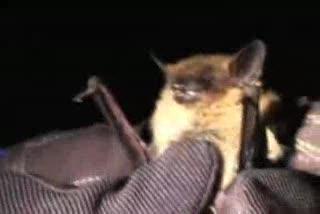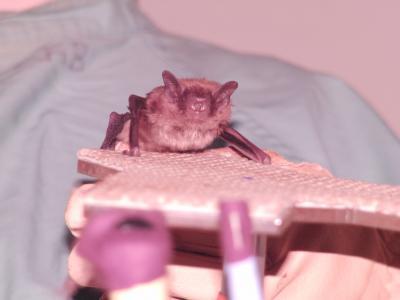"The problem the bat is facing is that it's flying around in this really complicated environment. It's getting all these echoes back [from the sonar broadcasts it emits], and the echoes are all arriving at almost the same time," said Bates, lead author on the Science paper. "And they have no trouble at all dealing with that. We're trying to figure out perceptually how these bats distinguish an echo from a nearby target from all the background echoes that are arriving within a similar time window."
In a series of experiments, the researchers studied those times when the bats would encounter a "blind spot," when the echoes were so close together that the bat could not distinguish its target from the surrounding clutter. The range in which the bats can detect when one echo interferes with another is a mere 50 milliseconds, the researchers report.
Harmonics plays a major role. Bat chirps — sounds — generally have two harmonics. When a bat chirps, it waits for the corresponding echo. It makes a mental fingerprint of the emitted sound and its echo; if the broadcast/echo fingerprints match up precisely, then the bat "will process it and produce an image," Simmons said. In many cases, that image is an object it is targeting. But when the second harmonic is weaker in the echo fingerprint, the neurons' response is delayed by as few as 3 microseconds. That delay, while undetectable to humans, is enough to tell the bat that the object is present, but it is not its primary interest.
"What the bat does is it takes clutter and defocuses it, like a camera would, so the target remains highly defined and in focus," Simmons said.

Neuroscientists at Brown University have learned how bats can remain on target despite obstacles in their midst. The key lies in bats' neural response to echoes from their sonar pulses.
(Photo Credit: U.S. National Science Foundation)

Bats use harmonic variation to distinguish the echoes of obstacles or other background noise from the chosen target. It happens instantaneously.
(Photo Credit: Simmons Lab, Brown University)
Source: Brown University